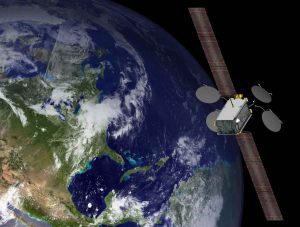What is a platform satellite
A platform satellite is a sophisticated system that serves as the foundation for various space missions. It is designed to house the essential components required for functionality while accommodating mission-specific payloads. These satellites are often referred to as the backbone of satellite technology, offering a modular and reusable approach for diverse applications such as communication, Earth observation, navigation, and scientific research.

Core components of a platform satellite
Power systems
The power system is a critical element in any platform satellite, ensuring consistent energy supply. Solar panels capture sunlight and convert it into electricity, while batteries store this energy for operations during periods of eclipse or shadow. Advanced power management systems optimize energy usage, extending the satellite’s operational life.
Attitude and orbit control systems
To maintain the satellite’s orientation and trajectory, the attitude and orbit control systems are essential. Using sensors, reaction wheels, and propulsion units, these systems ensure that the platform satellite remains stable and aligned for optimal performance.
Communication systems
Communication systems facilitate data exchange between the satellite and ground stations. These include antennas, transponders, and onboard modems. Reliable communication systems are crucial for telemetry, tracking, and data transmission, which are fundamental to mission success.
Thermal control
Space environments expose satellites to extreme temperature fluctuations. Thermal control systems, including radiators and heat shields, protect sensitive components and maintain operational stability. Proper thermal management ensures long-term reliability.
Payload accommodation
One of the defining features of a platform satellite is its ability to host a variety of payloads. Payloads are mission-specific equipment, such as cameras, scientific instruments, or transponders, which determine the satellite’s primary function. The platform is designed to integrate seamlessly with these payloads, offering versatility for different mission objectives.
Advantages of platform satellite systems
Modular design
The modular architecture of platform satellites allows manufacturers to develop systems that are both cost-effective and customizable. This flexibility reduces development time and enables quick adaptation to specific mission needs.
Cost efficiency
By standardizing core components, platform satellites lower production costs and simplify maintenance. Reusability and scalability further enhance economic efficiency, making them ideal for commercial and governmental projects alike.
Enhanced reliability
Platform satellite systems are tested rigorously to ensure reliability in harsh space conditions. Their proven track record minimizes risks, ensuring consistent performance throughout their operational lifespan.
Applications of platform satellite technology
Communication networks
Platform satellites are widely used in building global communication networks, providing connectivity for telecommunication, internet services, and broadcasting. These satellites bridge the digital divide by extending coverage to remote and underserved areas.
Earth observation
In Earth observation missions, platform satellites carry sensors and cameras to capture high-resolution images and data. These observations are essential for weather forecasting, disaster management, and environmental monitoring.
Navigation and positioning
Global navigation satellite systems rely on platform satellites to provide accurate positioning and timing data. These systems are critical for transportation, logistics, and military applications.
Scientific research
Platform satellites play a significant role in scientific exploration, supporting studies in astrophysics, climate change, and space weather. By hosting advanced instruments, they enable groundbreaking discoveries and innovation.
Future trends in platform satellite technology
Miniaturization and innovation
The industry is moving toward smaller, lighter, and more efficient platform satellite designs. Advances in materials science and electronics are enabling compact systems that maintain high performance.
Increased automation
Artificial intelligence and machine learning are being integrated into platform satellites, enhancing autonomous decision-making and operational efficiency. These technologies enable satellites to respond dynamically to challenges and opportunities in space.
Expansion of mega-constellations
Platform satellite systems are integral to the development of mega-constellations, where hundreds or thousands of satellites work in unison. These constellations are poised to revolutionize global communication and Earth observation.
Why platform satellites are essential for the space industry
Platform satellites provide the foundation for a wide array of space missions, enabling advanced capabilities with cost-effective solutions. Their modular design, adaptability, and reliability make them indispensable in the rapidly evolving space industry. As the demand for satellite-based services continues to grow, platform satellites will remain at the forefront of innovation, shaping the future of space technology.
